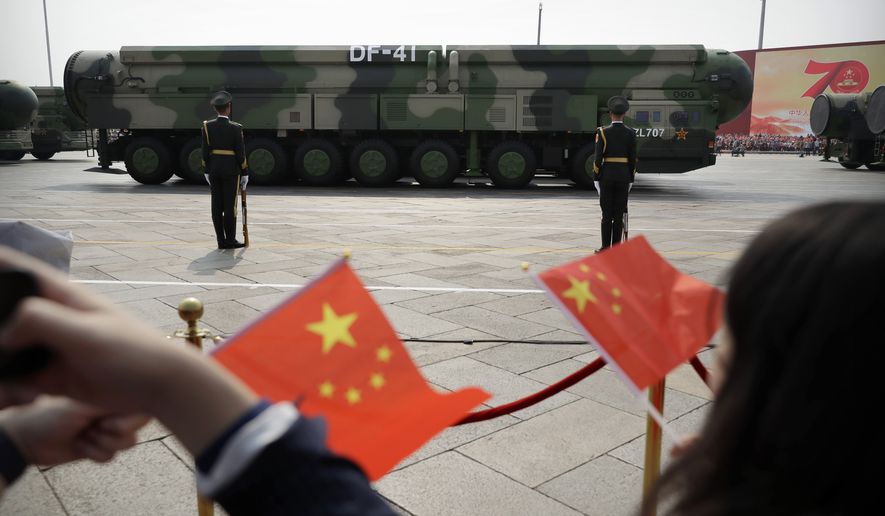The capabilities of the Chinese military continue to beat U.S. estimates, and neither the Soviet Union at the height of the Cold War nor any other country in recent history has consistently exceeded Pentagon and intelligence community projections to this extent, a top Air Force general said Wednesday.
In an exclusive interview with The Washington Times, Lt. Gen. S. Clinton Hinote, the Air Force’s deputy chief of staff for strategy, integration and requirements, offered a blunt assessment of how quickly the Chinese armed forces have accelerated key programs such as hypersonic weapons, nuclear arms, and a host of others. Gen. Hinote’s sobering take came just hours after a new Pentagon report revealed that the U.S. now expects China to have 1,000 deliverable nuclear warheads by 2030 — beating Defense Department projections offered just last year.
“One of the most interesting things about being a China-watcher over maybe the last 10, 15 years has been it’s the only country certainly in my memory, and I’ve had people in the intelligence community tell me that they’ve never seen a country that consistently accelerates faster than we estimate,” he told The Times. “The Soviets didn’t do that. Certainly not North Korea or Iran, anything like that. But China has done a good job of taking their economic power … and applying that to acceleration of military capability. And this is why you’re seeing things like the hypersonic test” conducted by China last summer and recently confirmed by top Pentagon officials.
“I always expect China is going to be pushing the edge of that envelope increasingly forward,” he said.
Gen. Hinote — who has loudly and repeatedly sounded the alarm about how China is approaching or already at parity with the U.S. by some military metrics — said that the Pentagon is well aware of Beijing’s major investments in hypersonic weapons. But he said the specifics of last summer’s test did surprise top military leaders.
“The way they tested this last one did catch people by surprise. And I think that shows this is a very capable country that is committed to increasing its military power. And it’s going to do that. It’s going to pursue power,” Gen. Hinote said.
The frantic pace of China’s military expansion has become the defining challenge for Gen. Milley, Gen. Hinote and other leaders across the Pentagon. Defense Secretary Lloyd Austin, for example, calls China the “pacing challenge” for the U.S., with virtually every major initiative inside the Pentagon being measured against the capabilities now being wielded by Beijing and its People’s Liberation Army (PLA).
In some areas, such as the number of ships in each country’s navy, for example, China has already pulled ahead of America — though analysts say that the U.S. Navy’s overall capabilities remain superior.
But raw numbers and specific vehicles and equipment are just parts of a much bigger, more complex set of problems posed by China and its military ambitions.
For U.S. planners, the greatest challenge is developing realistic plans to defend allies halfway around the world from Chinese military aggression. The most pressing example is the potential defense of Taiwan, the island state China regards as a breakaway province.
Gen. Hinote said U.S. war game exercises and other planning sessions in recent years have focused intensively on the very daunting problems posed by a Chinese attack on Taiwan. Chinese military capabilities that may be beyond American projections make those problems even more difficult to solve.
“We have to be able to stop it. We have to be able to defend Taiwan. We have to be able to sink their navy and shoot their aircraft that are coming at and attacking Taiwan,” Gen. Hinote said. “And that’s really, really hard because it’s basically on China’s front door step. It’s like us trying to invade Cuba and China trying to figure out how to defend it.”
• Ben Wolfgang can be reached at bwolfgang@washingtontimes.com.




Please read our comment policy before commenting.